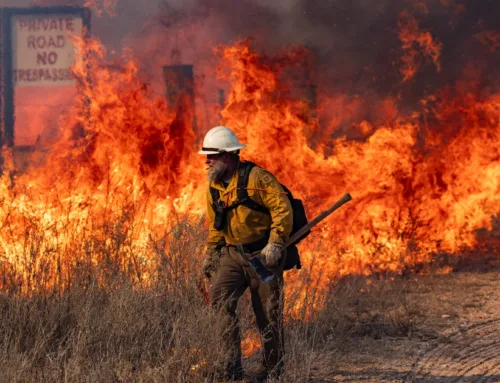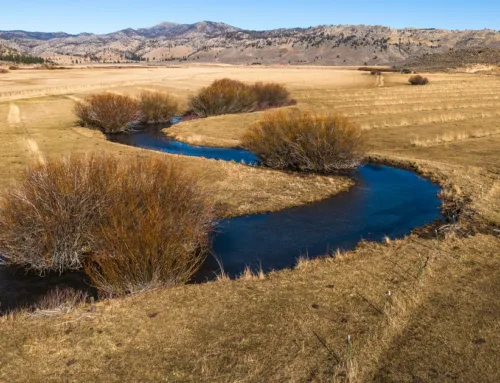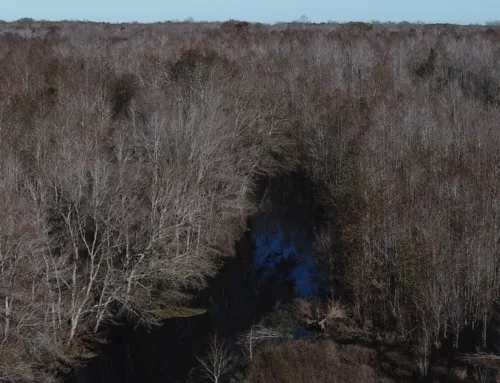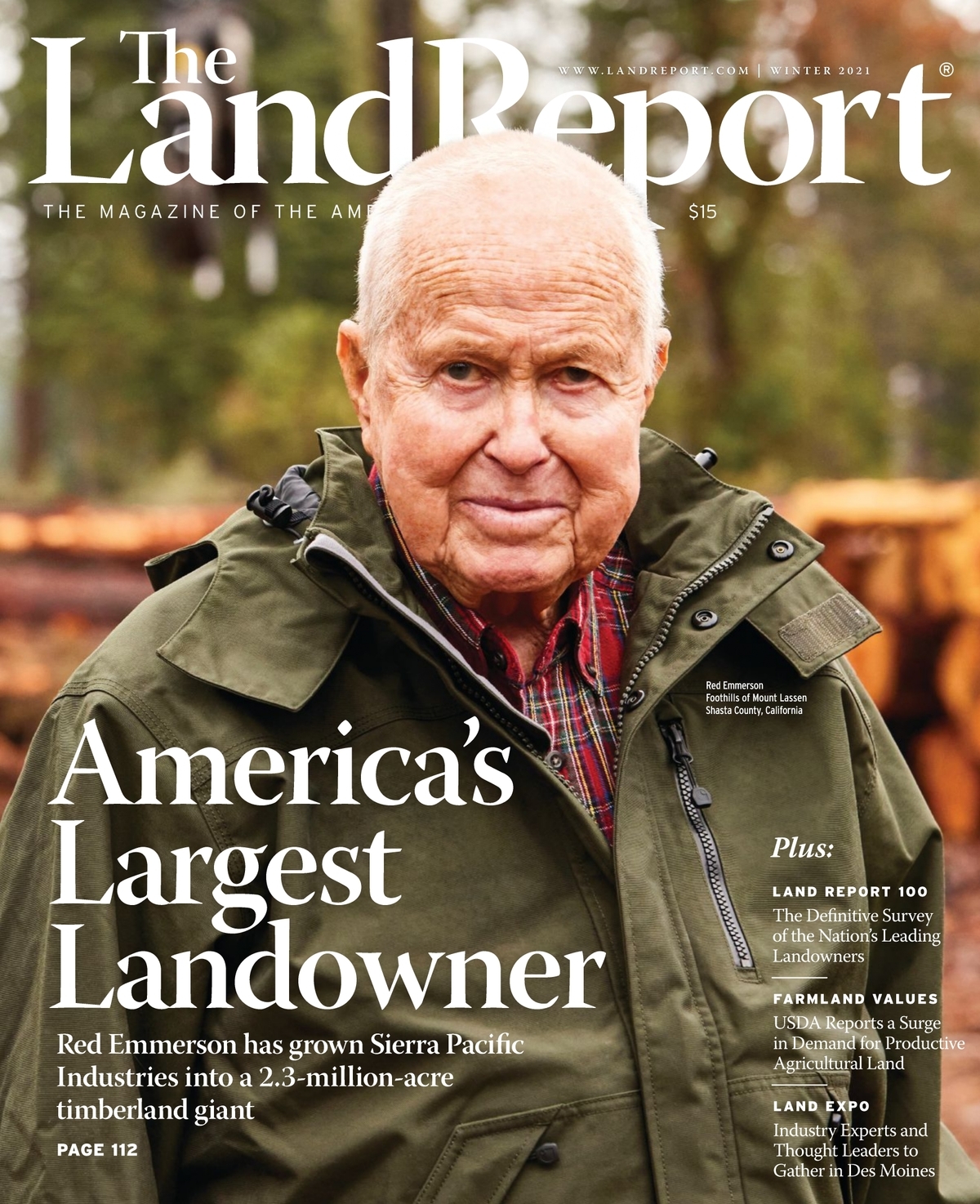The Law of the Land
The Law of the Land
By Trey Garrison
Photography By Sean McCormick
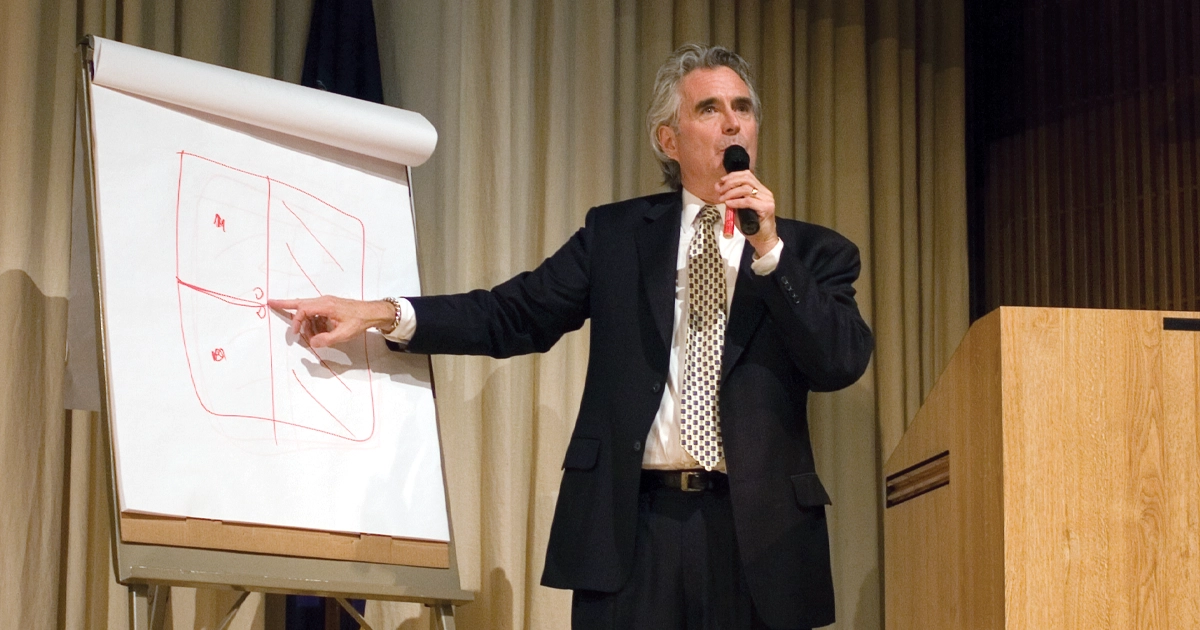
LR_StephenSmall-01
Stephen Small paces the stage of an auditorium at The American College in Bryn Mawr, Pennsylvania. Despite his low-key speaking style and his obtuse subject matter — federal tax code — the Boston attorney holds his audience’s attention like a prophet preaching salvation, which in effect he is. Small works the crowd, answering questions and drawing engrossing illustrations from his iconic legal career. His styled silver hair and trim physique, wrapped in a simple tailored black suit, belie his 61 years, just as his confident Midwestern accent runs counter to his Boston roots.
The 50-plus audience members range from bookish attorneys in suits and tennis shoes to conservancy directors to curious local landowners. Everyone, it seems, is taking furious notes because all seek protection in one form or another: to protect a valued client from possible tax liabilities, to protect a piece of land from crass development, to protect a cherished legacy from the bad decisions of a dim-witted heir.
From Yale to the IRS
And with Small, they are indeed finding their salvation. Or something very nearly like it. The 1967 Yale graduate was a young lawyer with the IRS when he helped write the tax code for conservation easements in the early 1980s. Since then, the laws themselves haven’t changed much. What has changed is the landscape of America.
“When I left the IRS in 1982, I was the foremost authority on a topic no one cared anything about. Over the past 25 years, everything has changed. What I see now is an interest in conservation easements I couldn’t have dreamed of back when I started,” Small says.
Conservation Easements 101
Quick backgrounder: Conservation easements are a voluntary agreement made by a landowner and a nonprofit organization. (Or, in much rarer cases, a government entity.) The easement places restrictions on the development or use of the land even as the landowner retains his or her other rights. Each easement is tailor-made for the land in question; owners can still use the land for anything not prohibited by the easement. But there is a catch: Once given, an easement lasts forever. The tax code requires that the easement be enforceable in perpetuity.
So what does the landowner get in return? For one, it’s an assurance that his or her land won’t be developed or subdivided by heirs or subsequent owners. That’s the altruistic angle. But there’s another aspect as well: money. Or, rather, saving money. Conservation easements are treated by the tax code as charitable contributions, and this year the deduction would be equal to writing a check to your alma mater.
Right now there exist deductions almost unheard of in IRS history, but unless the increased deductions are renewed by Congress, they will expire at the end of the year.
Previously, an individual could deduct the value of a conservation easement donation generally up to 30 percent of the donor’s contribution base for the year with a five-year carryforward of any unused amount. Also, under the old law, a corporation could deduct 10 percent of the corporation’s taxable income for the year, with a five-year carryforward.
Under the new law — and remember, it’s set to expire at the end of 2007 — landowners can deduct the value of their donated easement up to 50 percent of their adjusted gross income over as many as 15 years. And qualified landowners who derive their primary income from ranching or farming have an even better deal: 100 percent of their income is deductible with a 15-year carryforward. Also, landowners in some states, including Colorado, Maryland, North Carolina, and Virginia, are eligible for deductions from state income taxes as well.
Tax-Planning Tool
“This is a tax-planning opportunity the likes of which we’ve never had before,” Small says. “If it’s extended, fine. But anyone who wants to take advantage needs to assume it won’t get renewed and needs to start doing their work now.”
“Now, the difference between 30 percent and 50 percent, while nothing to sneeze at, is minor compared to the difference between a deduction you can carry forward for 6 years versus 15 years,” Small says. “A charitable donation now, to lock in a 15-year carryforward to use against an anticipated income event in, say, 10 years, seems to me to be a value no one would want to miss.”
In short, he says, landowners who are interested in increased incentives need to act now. And landowners across the country are heeding the call. From picturesque New England to the wide-open space of the West, conservation easements and land conservancies are spreading like wildfire.
Putting Easements to Work
Doug Hart wears two hats in Billings, Montana. He’s a director and principal partner for Hall and Hall, a leading real estate firm out west. And he’s also director of the Wyoming Stock Growers Agricultural Land Trust, whose mission is to preserve ranches and the ranching way of life without violating the local ecosystems.
To Hart and other ranchers, “government regulation” is a phrase polite people don’t use in mixed company. A rude epithet automatically precedes it. Conservation easements, however, are an agreeable, even preferred, means to protecting the land.
“We’ve had the opportunity to get out in front of this and educate people about how this is a way they can ensure [the future of] their land without having a bunch of rules come down from Washington,” Hart says. “There are a lot of people who see anything the government does as a communist plot, but people are realizing this is keeping land in private hands and with easements enforced by private entities. There’s just no way for the land or the easement to end up in government hands, and that’s appealing.”
Hart says there tend to be more easements donated by landowners who are not necessarily the operator-owners.
“Rural ranchers and farmers don’t have a lot of income, even if they have a valuable asset. Of course, the bona fide operator may want to preserve their family farm anyway, and that’s who among them would donate an easement,” Hart says. “But the people in the best position to take the best tax advantage of [conservation easements] are people with a high income or people who are looking at a high-income event a little down the road.”
Easement Valuation
Determining the value of an easement, of course, takes a little savvy, and that’s what Small’s seminars cover in addition to legal issues. (More information is available at www.stevesmall.com.) The value of the easement as a charitable gift is determined by an appraiser who values the property before and after the easement restrictions are applied. The difference between these two values is generally the amount of the charitable gift for tax purposes. And every easement is unique. Some might allow agricultural production but not timber harvesting. Some might allow homebuilding on a few acres while reserving the rest of the acreage. Some might allow hunting and subsurface mining while precluding agricultural use. Some allow limited development on certain tracts, disallowing it on others. How much building is too much? Depends on the land in question.
“There’s every combination you can think of,” Small says. “When I started, there was no information, almost no land trusts, and no one could be bothered to hear what a conservation easement was.” A quarter of a century later, Small’s yeoman efforts have changed the landscape. Today there are close to 2,000 land trusts operating in the United States and more than 5 million acres under easement.
Small is passionate about both the law and the land. Ironically, he is a city boy who has never owned more than a quarter-acre lot in the urban confines of Boston. He remembers early on how little information was available to landowners. There was no shortage of books lining the shelves on how to develop land but nothing on conservation easements. In the late 1980s, he put together a compilation of his memos into a self-published book titled Preserving Family Lands. Little did he know that the book and its sequels would sell more than 100,000 copies in decades to come.
Record-Setting Easements
Small has been at the vanguard of the conservation easements movement, representing landowners or conservancies in some of the most important donations and purchases in history. He advised the New England Forestry Foundation in the largest easement deal ever: a record-setting 762,000 acres in 2001 by Maine’s Pingrees (see The Land Report, April 2007). Although the Pingrees sold the land’s development rights for $37 per acre (more than $28 million), their Seven Island Land Co. continues to run timber operations on these holdings.
Small has acted as counsel to more than 500 individual and family property owners. He was an adviser to the seller in a $100 million conservation purchase by a government agency and counsel to the easement holder in what he believes is the largest conservation easement purchase by a non-profit to the tune of $60 million.
“The field has moved,” he says. “The field has exploded. I’ve never been so busy in my life.” Two of his favorite deals involved watershed easements that pointed the way for landowners. The first was the late Gertie Legendre, who owned Medway Plantation, almost 7,000 acres just outside Charleston, South Carolina. “Gertie donated easements to Ducks Unlimited and Historic Charleston Foundation, and she [set] an example in the state. Others followed there,” he says. “The other was Bob Woods of Martha’s Vineyard. Bob owned 530 acres of land on Martha’s Vineyard. He loved his land, which he inherited, and wanted to protect the land for nature as his mother had. The property is now under easement to The Nature Conservancy.”
Growth in Popularity
That’s the kind of motive for people like Rhett and Barbara Austell, prominent landowners in the Philadelphia area who attended Small’s seminar in Bryn Mawr. They aren’t (necessarily) seeking the income tax savings. They are more interested in preserving their family lands and preserving the open green spaces they have come to love.
“We’ve seen too many families allow their land to be developed or divided and whatever is left is ruined,” Barbara says. Asked whether she thinks placing such limits on lands she will bequeath to her heirs is fair to them, she quips, “They’re fortunate to inherit land, and if we are leaving it to them, we should be able to place whatever conditions on it we desire.” Then she adds, “If we put a strip mall on it, is that any more fair for our heirs 100 years from now?”
The growth in popularity of conservation easements has not been without some controversy. While it is still a sleepy field, the late 1990s saw the rise of sharks-bad faith promoters, bad appraisals, and questionable deals. This was highlighted in 2003 when The Washington Post ran a series of articles on abuses of the system. The Post profiled people such as Mike Kahn, a Florida consultant who advised investors to do things like buy golf courses and prohibit building on the fairways. Kahn described it as easy money. The IRS described it as fraud.
Abusive
Criticisms of easements run the gamut. Some worry that because trusts can operate behind closed doors, they aren’t transparent enough. Others worry that “in perpetuity” can be challenged in court later down the road. And, of course, the trusts and conservancies themselves are the enforcers of easements. Trusts can be persuaded to turn a blind eye to development that exceeds an easement’s terms, they say. Then there are the cases of deals that are less obvious than Kahn’s, but no less shady.
As a general rule, Small says, the income tax deduction is equal to the fair market value of the subject property before the conservation easement minus the fair market value of the subject property before the conservation easement. Simply put, the fair market value is what a knowledgeable and willing buyer would pay for the property if it were put on the market and sold. The IRS, Small warns, is aware of some of the tricks appraisers use to increase value.
“The most common appraisal trick I’ve seen is for an appraiser to assume the highest possible level of development that could be approved under local zoning and value the land under that intense level of build-out, totally without regard for whether there is sufficient and realistic market demand for the product,” he says. “My favorite illustration is Aunt Sally’s farm, 20 or more miles from the nearest city, based on a 3,500-unit planed development, with hotel and conference center, that in fact could be approved under local zoning but that no builder would ever build because the demand simply does not exist.”
That simply won’t fly. That’s what his seminars and books are all about. More than 100,000 copies of Preserving Family Lands have sold. It’s available at www.stevesmall.com.
Small submitted a statement on easement abuse to the Senate Finance Committee in 2005 defending good faith easements, which still represented the lion’s share of donations. He says the attention actually helped the field because it introduced landowners to the vehicle of easements. Tightened controls on valuations and reporting meant fewer abusers; yet despite these tighter controls, easement donations have still grown.
Under the deduction rules, a taxpayer who claims in excess of $5,000 for a charitable gift must have a qualified appraisal, and any deduction more than $500,000 must include the appraisal with the return. In short, appraisers become subject to scrutiny from the IRS. Failure to comply with all of the new appraisal regulations means the IRS could disallow the deduction.
This kind of code tweaking keeps Small busier than he’s ever been. Easements as a vehicle have been exonerated. After the Senate hearings, the Bush administration expanded the tax benefits for easement donors in the Pension Protection Act of 2006.
“One of the few things they’ve done right,” Doug Hart says. Some easement deals are now in the works that equal or even exceed some of the largest on record. They’re betting against the renewal of the 2006 revision.
And Small? He is pleased, if a little shy about admitting to it, that his legacy will be something more than just that of a legal career in tax law. Because of the code he helped write and his work since leaving the IRS, American land has been conserved, property rights have been protected, and American landowners have benefited both in the bottom line and in their souls.
“I’ve been blessed. I have a real passion for this. It feels like a fit,” Small says. “I’m just hoping we see the benefits renewed this year. If not, I’m going to be even busier through the end of 2007. My wife won’t be happy about that.”

